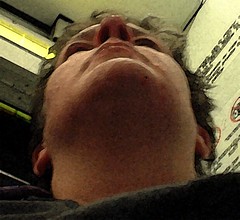QUESTIONING AND TEACHING: a manual for practice
by J. T. Dillon © 1988
Pub. Resource Publications, 195 pages
In less than 200 pages of Questioning and Teaching, Dillon provides rationale, purposes, processes, and extended examples of the effective use of questions in teaching. Most important is the focus on student questions. Teachers are generally practiced at asking questions and evaluating responses (though usually not as skillfully as chapters two through four teach), but are notoriously bad at allowing for and encouraging student questions. Dillon's continuous premise is that learning results when a genuine question and its answer join to form understanding. Dillon's book provides the teacher of any level with the tools to help students become inquirers and to ask questions that serve pedagogical purpose. This book is highly recommended.
Summary
The practice of questioning. This book investigates the question, "how are questions rightly used to serve educative purposes?"
Student questions. The culture of the classroom works against student questions. The process of questioning begins with perplexity after which the student chooses either an asking or a non-asking process. Because of classroom culture, the teacher must make systematic room for student questions, invite them, wait for them, and when the question is asked welcome it and sustain the asking rather than slipping into teacher questions (all too common),
Teacher questions. While teacher questions are used in nearly every aspect of classroom circumstance, the first use of teacher questions is in planning for classroom activity. Teacher questions are involved in the design of the lesson, the study of the subject matter, the preparation for activity, and in evaluation processes. The planning and process of teacher questions must all aim at pedagogical purpose, keeping in mind the particular classroom circumstance. The use of teacher questions follows a seven step process: purpose, preparation, question, answer, reaction, assessment, and redesign.
Questioning and recitation. The principle to remember is to "use questions in service of pedagogical purpose in classroom circumstance." In recitation, which searches for correct answers, the teacher asks a question, a student answers, and then the teacher evaluates the answer and asks another question. Recitation questions can either be based on teacher questions or on student questions. Either way, the primary task of the teacher is to wait and listen to the entire answer before responding. It the recitation is based on student questions, the teacher listens while the students engage in the question-answer process. In recitation, multiple questions are produced.
Questioning and discussion. Unlike recitation, discussion usually involves one main question with no clear correct answer. Further, in a discussion, while the teacher still retains control at every turn at talk, the teacher most often passes the turn to a student or remains silent, and when taking a turn, makes a statement rather than asking a question. When the teacher does ask a question, it is a question that genuinely perplexes the self. The point of discussion is to allow the students to explore the topic themselves.
Tag: books
Friday, December 10, 2004
Subscribe to:
Post Comments (Atom)



How can I get this book? I am from Greece, I study Pedagogy and I really need it. Should I bye it from Amazon? And how am I going to manage the difference between our money? (dollars-euros)
ReplyDeleteI would suggest starting with Library thing (http://www.librarything.com/work/2295026/book/10800656), as it lists several sources for the book. As far as the euro/dollar problem, I've no idea.
ReplyDeleteIt is a great book. Hope you can find a copy.